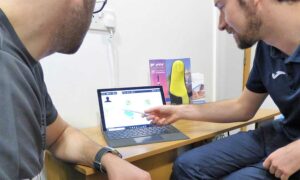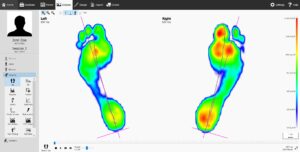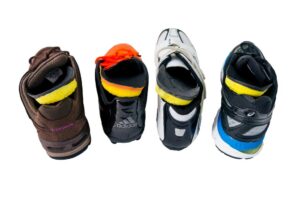The use of a force pressure plate to assess risk of injury and provide advice for reduction.
A huge number of athletes, in particular, runners look for assessment to guide them on the best way to reduce injuries and increase the comfort in their feet while \’pounding the pavements\’. A common place to look is \’gait analysis\’, which, depending on where you look will be provided on treadmills, visually, on recordings, or using computer systems.
Now, the first place to start in reducing injury is looking at training loads, resistance training, training methods, nutrition, sleep, mental health and hydration, but this blog is going to look beyond that, at what else can be done.
At Reflex-18 Sports Injury Hub, we use the RS Footscan to provide information on foot strike to be able to provide advice on reducing the risk of injury, footwear advice, and even produce 3d printed orthotics. I thought I would share with you the reason why we use this technology.

Biomechanics (the way you move) has long been associated with the risk of injury, and different movement patterns have been suggested to be the cause of different injuries and performance. However, it is clear that with \’abnormal\’ biomechanics and posture such as flat feet are not a guarantee that you will not be able to perform, or indeed will get pain (Usain Bolt has flat feet and is clearly not affected in his performance). Nonetheless, there does appear to be a link between biomechanics and some injuries.
A study in 2014 took a group of military recruits, assessed them using the RS Footscan pressure plate (study) to see if there was any link between the foot strike assessment and the number of overuse lower limb injuries. It found that 72% of the overuse lower limb injuries were assessed at medium and high risk in the footscan assessment. This data suggests that, using the RS Footscan, the risk of injury can be assessed. In this study, the majority of subjects were seen as low risk, so that\’s good news!

Foot scan gait analysis to reduce injuries
This then begs the questions: What then? If I\’m high/medium risk what should I do?
Well, first off, remember these are statistics; and you may be high risk, but never get injured, so you don\’t necessarily have to do anything. However, for many, they may want to try to move from the high to the low-risk groups.
A recent study (study) that looked at selecting your footwear based on comfort found that this method does not change running biomechanics or oxygen consumption. That means that going into the shop and choosing your sports shoes based on comfort will not change the way your foot moves when running, and therefore would not be able to move you from a medium or high-risk group, to the low-risk group.
In contrast, there is suggestion that the forces through the bottom of your foot can be influenced by exercise (study). So, it may well be beneficial to incorporate foot and ankle exercises in your training plan, and also spend some time each day with no shoes on in order to exercise the postural foot muscles. This is probably a great place to start, it is very much my opinion that we should include foot exercises in your training and they are pretty simple to do.
It has also been shown that a custom made orthotic significantly reduces the risk of injury (study) in military recruits. So something that could be added to the foot exercises would be a custom orthotic if deemed appropriate. Remember though, this is not right for everyone, and foot strike assessment does not usually result in the advice of orthotics, and most people are considered low risk anyway.

So, in summary, there is a lot you can do past the initial suggestions to reduce your risk of injury, however, choosing a pair of trainers based on comfort is unlikely to achieve this goal. We use the RS Footscan to give accurate plantar pressure assessment which can then be linked to a 3d custom insole to correct any movements deemed necessary which in turn reduces the risk of lower limb injury.
